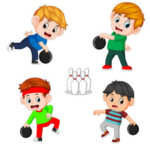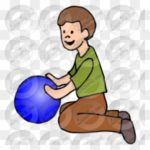
by Neetu | Jun 8, 2020 | Fitness Activity
Movement skills/concepts
Throwing at a stationary target, passing and receiving while moving, running, dodging, and moving into space.
Set-up
- Large ball, hoop, team bands/bibs.
- A marked hard surface area (one-third of netball court) with a throwing line and a target area (hoop).
- Two teams of six-eight each.
Activity
To start the game, the thrower attempts to land the ball on the full in the target area. If successful, that team’s backstop takes possession. If unsuccessful, possession goes to the opposing backstop.
The teams then move onto the court and the team with possession attempts to tag (with the ball) a member of the other team. The player in possession may pivot, take one step and hold the ball for no longer than 3 seconds. Players who are not holding the ball may move freely but cannot go outside the area during play.
If the attacking team infringes any of these rules or if the ball touches the ground, the umpire calls ‘Change’ and possession is taken by the other team. The ball must be held when a tag is made.
The non-scoring team restarts the game with a toss into the hoop.
Can you see …?
- accurate, rapid passing
- positioning to receive a pass
You could ask …
Attacking team: How will you work together to tag a player?
Defending team: How can you avoid being tagged with the ball?
Variations
Vary implement and skill: Use a soccer ball and passing, hockey stick and push pass, underarm/overarm throw, and a small ball.
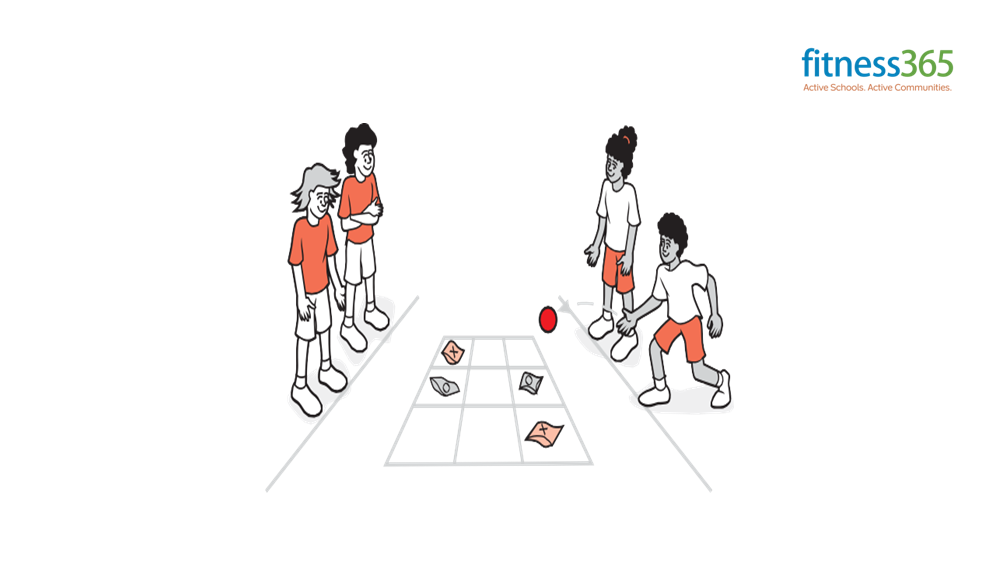
by Neetu | Jun 8, 2020 | Fitness Activity
Movement skills/concepts
Underarm throw at a target, judging distance and strategy.
Set-up
- Grids marked on hard area or wall, two small softballs/beanbags per grid, five cross markers, and five nought markers.
- Two teams of two-three each: one is noughts, the other is crosses; one team stands on either side of the grid, or both teams face the wall.
Activity
Teams take turns to underarm throw a ball, aiming to hit one of the squares on the full. When a square is hit on the full, the throwing team places one of its markers on it.
The aim is to mark three squares across, down, or diagonally.
Can you see …?
- stepping towards target
- eyes on target
- long arm swing
- following through
You could ask …
How will you decide which square to aim for?
What can you do to ensure that you land in the square that you want?
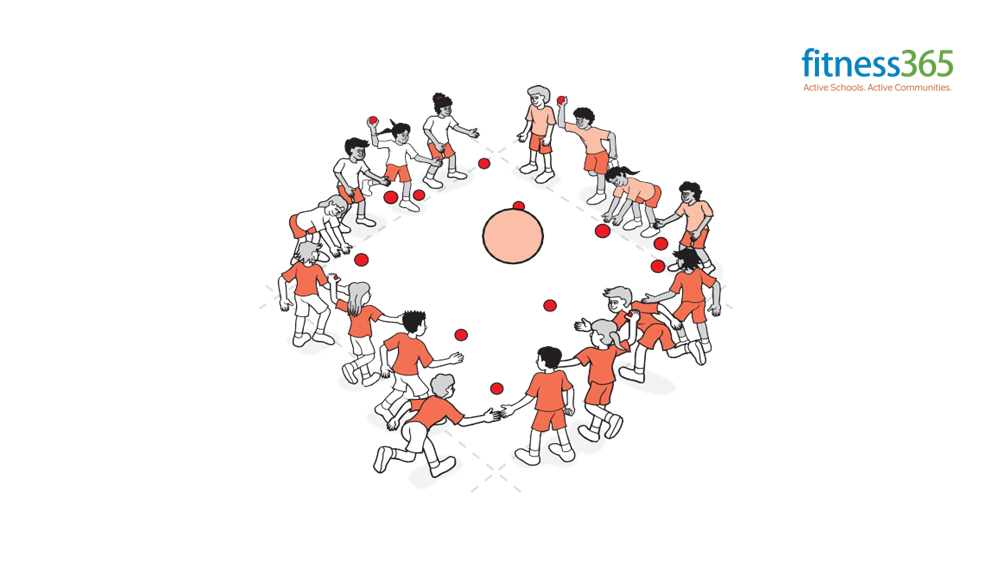
by Neetu | Jun 5, 2020 | Fitness Activity
Movement skills/concepts
Throwing at a moving target.
Set-up
- Small balls, large ball (Swiss ball).
- Four teams of approximately four–five players each: each team stands on one side of a large market square in a hard flat area, with three or four small balls per team and a large ball in the center of the square.
Activity
Each team throws balls at the large ball and attempts to drive it over another team’s line. Throwers must keep behind their line when throwing. They may go into the square to retrieve a ball.
Can you see …?
- pointing at the target with the non-throwing hand
- full arm action
- following through
You could ask …
What kind of throw will you use to hit the ball?
How will you work as a team to move the ball across an opponent’s goal line? What strategies will you put in place to defend your goal line?
Variations
Change set-up: Instead of a square, play with two teams behind parallel lines.
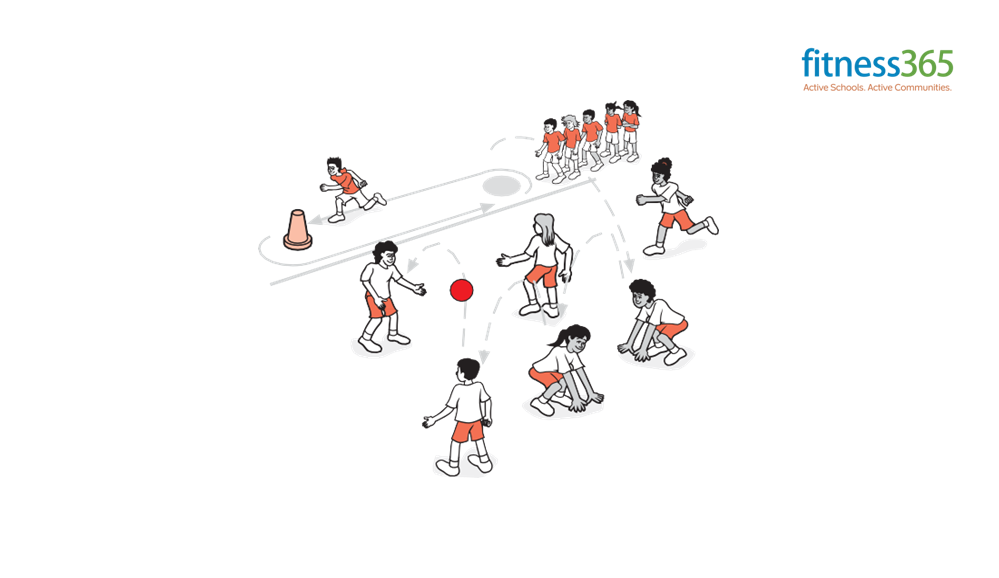
by Neetu | Jun 5, 2020 | Fitness Activity
Movement skills/concepts
Throwing and catching, fielding a ball, and running.
Set-up
- Ball, marker, hoop.
- Two teams of six players each: the throwing team is lined up behind a baseline; the fielding team is spread out across grass or hard surface area.
- A marker is placed 5–10 meters from a throwing base (hoop).
Activity
The first person in the throwing team throws the ball forward of the baseline and runs around the marker and back to the base. They continue running, counting each circuit as a run, until the fielding team calls ‘Stop’.
The player who fields the ball throws to another team member, then bobs down. The ball continues to be thrown around the team in this way until all have made a successful catch (i.e. five catches in total).
The last fielder to receive the ball calls ‘Stop’. The next thrower then throws.
Can you see …?
- good hand position
- moving into the catch
You could ask …
Fielders: How will you position yourselves to field the ball quickly? How will you speed up the throw–catch sequence?
Throwers: Where will you throw the ball to allow more time to score runs?
Variations
Vary the type of ball and pass: Use a rugby ball and a punt kick.
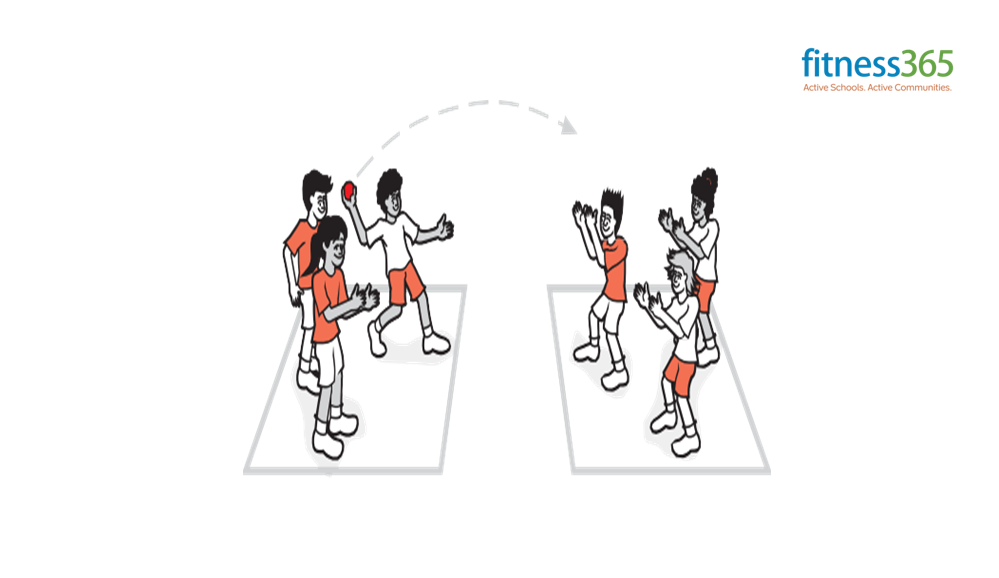
by Neetu | Jun 5, 2020 | Fitness Activity
Movement skills/concepts
Catching a ball approaching at different angles, levels and speeds, and throwing a high ball.
Set-up
- Small balls.
- Two teams of three each, one team with the ball; teams stand in marked zones (10 meters or more apart) of a grass or hard surface area.
Activity
A player in one team throws the ball in an attempt to hit the ground in the opponents’ zone and score a point.
If an opposing player catches the ball on the full, they score a point.
Can you see …?
- calling ‘mine’ when taking a catch
- covering a space (zone)
- positioning under the ball
- correct hand position
You could ask …
How will your team work together to get into a position to catch the ball? Where will you aim to throw the ball to hit the ground?
Variations
Vary the type of ball and throw: For example, use a soccer ball and kick.
Increase the number of balls: Introduce a second ball.
Vary difficulty level: Increase or decrease the size and distance of zones to suit the skill level of the group.
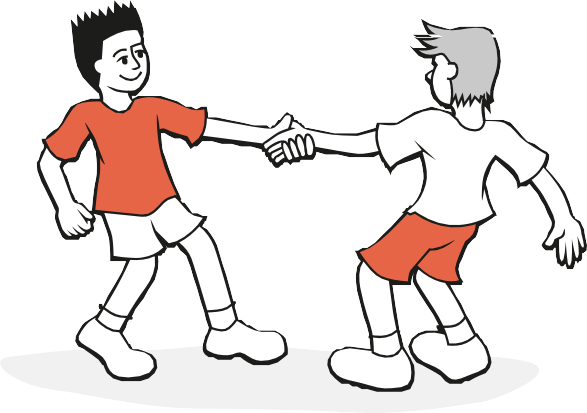
by Santosh | Jun 5, 2020 | Fitness Activity
Movement skills/concepts
Pushing and pulling in pairs, resisting pushing and pulling, hopping, and relationships (with others).
Set-up
Children are in pairs of evenly matched skill on a suitable surface.
Teach the wrist grasp.
Activity
Two-handed tug of war: Partners face each other across a line and grasp one or both wrists. Each attempt to pull the other across the line. Next, try two hoops instead of the line.
Two-handed push: Partners face each other across a line and place their palms against the other’s palms. They both try to push their partner backwards so that they can walk across the line.
Hopping tug of war: Partners face each other, grasp wrists and raise one knee forward. They hop and pull until one contestant is forced to lower their leg.
Hopping push: Partners face each other with their hands on each other’s shoulders and one foot raised. Each tries to push their opponent back over a line while hopping. Signal change of feet frequently.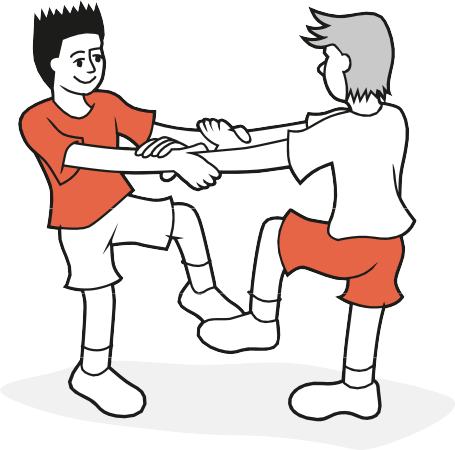
Turn the turtle: One child lies face down with arms and legs spread. Their partner tries to flip them onto their back.
Hand wrestle (Danish wrestling): Partners face each other, grasp one wrist with right/left hand and put an opposite foot forward. By pushing, pulling, and feinting, they try to make their partner move their front foot. The other foot may be moved to counter. A point is scored when the partner moves over their front foot.
Chinese boxing: Each partner holds the opponent’s right (left) wrist. The object is to touch the opponent’s shoulder.

Foot tug: Hooking foot to foot, opponents try to pull each other across a line.
Hoop wrestle: Two hoops are placed so that they touch. Each partner stands in a hoop and places their hands on their opponent’s shoulders. Pairs wrestle until one partner is forced outside the hoop. Skipping ropes, chalk circles or parallel lines could be used.
Ball tug: Partners face each other. Both grip a large ball, then try to pull each other across a line.
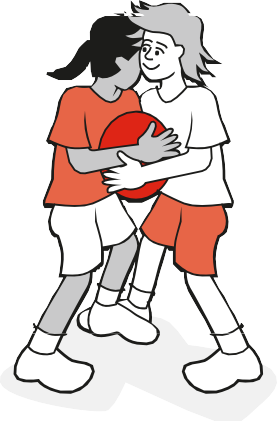
Indian wrestle: Partners lie on their stomachs facing each other. They grip right/left hands, with elbows on the ground and forearms upright. They try to make the back of their partner’s hand touch the ground.

Can you see …?
• evenly matched pairs
• strong, steady pushes and pulls
• strong grips
• friendly competition
• fair play and good sporting behaviour
You could ask …
What guidelines might you and your partner set up to enjoy these activities safely? What are examples of fair play and good sporting behaviour?
COOL DOWN/ CLOSURE
Review Skill/Activity, stretching, and questions.















